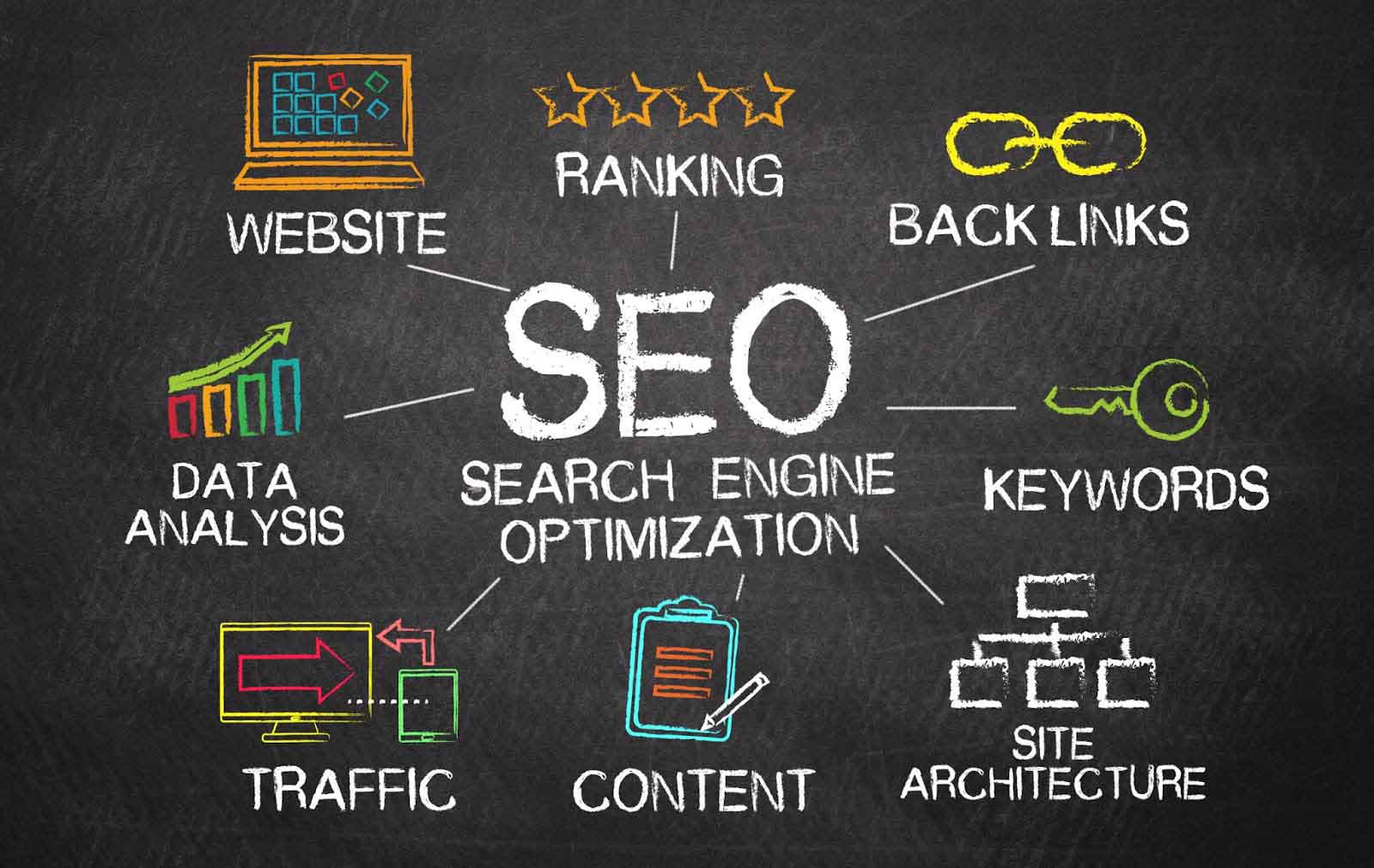You’ve invested time and resources into creating a high-quality website for your SEO ranking. But if you don’t properly optimize it, you might find that very few people are actually seeing it.
This lack of visibility can render your efforts nearly futile, as a great website must be seen to effectively impact its intended audience. To ensure that your site receives the attention it deserves, it’s crucial to enhance your SEO. To assist you in this endeavor, we’ve compiled a comprehensive list of strategies for boosting your website’s SEO.
By implementing these tips, you’ll increase traffic to your site and improve its rankings on search engines, enhancing its reputation and visibility. While possibly minor, these changes can profoundly impact your SEO and, by extension, your website and business.
Let’s take a look at some SEO optimization tips to boost your SEO ranking.
1. KEEP IT FRESH
The first of our SEO optimization tips is to regularly update your site’s content. This is about more than keeping visitors engaged — it’s a critical strategy for boosting SEO and enhancing the perception of your website’s relevance and vitality.
Search engines prioritize websites that offer fresh, up-to-date content, viewing them as more relevant and dynamic sources of information. This ongoing activity signals to search engines that your website is an active participant in your industry, increasing its authority and improving its ranking in search results.
Outdated content, on the other hand, can be detrimental to your SEO efforts and your site’s credibility among users. Visitors encountering old posts or expired information can give the impression that your business is neglected or no longer in operation, which could deter potential customers and harm your brand’s image.
To leverage the full potential of your website’s content for SEO benefits, consider the following strategies:
1. Regular Content Updates: Review and refresh your web pages to ensure current information reflects the latest developments in your field. This could involve updating facts, statistics, and examples or revising outdated viewpoints to align with current trends.
2. Blog Revitalization: If your site includes a blog, revisit and update older posts. This keeps the blog relevant and allows you to capitalize on existing traffic to those pages. Enhancing older blog posts with new data, insights, or relevant links can significantly boost their visibility and effectiveness.
3. Scheduled Content Audits: Implement a regular content audit schedule to identify pages requiring updates or improvement. This systematic review helps maintain a consistently high standard across your site and ensures that all content remains optimal for user experience and SEO.
4. Use of Evergreen Content: Focus on creating evergreen content that remains relevant and useful over long periods. This type of content requires fewer updates and continues to attract visitors to your site, contributing to sustained SEO performance.
5. Incorporation of User Feedback: Pay attention to user comments and feedback on your site’s content. Engaging with your audience in this way can provide insights into what additional information they might find helpful, guiding your content update strategy.
By integrating these practices into your content management process, you can maintain a website that is continually refreshed and optimized for search engine algorithms and user engagement, thereby enhancing both your SEO ranking and your site’s appeal to visitors.
2. ALL THE LINKS
Internal linking and backlinking are two pivotal SEO strategies that will significantly enhance your site’s visibility and authority on search engines. Let’s delve deeper into each tactic and understand how they can elevate your SEO game.
Backlinking
Backlinks, often referred to as “inbound links” or “incoming links,” are links from one website to a page on another website. They are highly valuable in SEO because they represent a “vote of confidence” from one site to another.
Essentially, when a site links to your content, it signals to search engines that others vouch for your content’s credibility and quality. This external validation boosts your site’s authority and improves your search engine ranking.
Creating Quality Backlinks
1. Content Quality: To attract backlinks naturally, focus on creating high-quality, informative, and valuable content that other sites would want to reference. This could include original research, comprehensive guides, or insightful analyses.
2. Guest Blogging: Writing articles for reputable websites in your industry can help you gain backlinks. These guest posts can include a link to relevant content on your site.
3. Building Relationships: Networking with other webmasters, bloggers, and influencers can lead to natural backlink opportunities. Engaging with related communities and sharing useful content can encourage others to link to your site.
4. Directory Submissions: While less impactful than they once were, submitting your website to well-curated industry directories can still provide valuable backlinks.
Internal Linking
Internal links go from one page on a domain to a different page on the same domain. They are crucial for website navigation and also help establish an information hierarchy for the given website. Using internal links wisely can boost your SEO by helping search engines understand the structure of your site and by spreading link equity around websites.
Optimizing Internal Links
1. Descriptive Anchor Text: Instead of generic text like “click here,” use descriptive anchor text that indicates the linked page’s content. This improves SEO and enhances user experience by setting clear expectations about the linked page.
2. Linking Deep: Beyond linking to your homepage or contact page, focus on linking deeper into your site’s content pages. This helps increase the visibility and value of more profound, less accessible pages.
3. Using Relevant Links: Ensure that internal links are relevant to the content they are embedded in. This relevance helps search engines better understand the context of the linked pages, which can improve their ranking.
4. Balancing the Number of Links: While it’s important to include internal links, overdoing them can be detrimental. Too many links can dilute the value of each link and potentially confuse both users and search engines.
By effectively using both internal linking and backlinking strategies, you can enhance your site’s structure, improve user engagement, and signal to search engines that your site is a trusted resource on particular topics.
This dual approach boosts your SEO and reinforces your position as an expert in your field, leading to higher search engine rankings and increased web traffic.

3. METADATA
Metadata plays a vital role among SEO strategies in optimizing your website for search engines. It provides structured information about the data on your web pages, helping search engines understand your site’s context and content more effectively. Let’s break down the types of metadata and discuss how you can optimize them to improve your SEO performance.
Types of metadata
1. Title metadata
This is perhaps the most important metadata on your page. The title metadata defines a web page’s title and is displayed on search engine results pages (SERPs) as the clickable headline for a given result.
It is essential for SEO, user experience, and social sharing. The title should be concise and clear and include the main keywords for the page. Ideally, it should be under 60 characters to ensure that it displays well on most search engines.
2. Description metadata
The meta description provides a brief summary of the web page’s content. While it does not directly influence rankings as much as other factors, it is crucial for click-through rates.
A compelling meta description can make the difference between someone clicking on your listing or choosing a competitor’s. It should be informative, engaging, and around 150-160 characters long to ensure it displays fully on SERPs.
3. Keyword metadata
Once very important for SEO, keyword metadata is not as influential today due to changes in search engine algorithms. However, it can still provide some value if used correctly, without keyword stuffing. It involves listing relevant keywords for your page but you should use them sparingly to focus on the most important keywords only.
Integrating Metadata with Content Strategies
While metadata is essential, modern SEO practices require more than well-crafted title tags and meta descriptions. Google’s algorithms increasingly prioritize the quality and relevance of content itself.
One effective strategy is to ensure that the first 150-160 characters of your page’s content are keyword-rich and informative. This opening snippet should act as a hook for readers and search engines, summarizing the page’s content effectively.
By incorporating relevant keywords and search terms into the beginning of your content, you make your page more likely to be recognized by search engines as a valuable source of information for users. This practice can help enhance your visibility on Google’s search results page, working in tandem with your metadata to attract more organic traffic.
Best practices for metadata optimization
- Be precise and concise. Ensure your metadata accurately reflects the page’s content. Misleading metadata can lead to high bounce rates, as users do not find what they expect.
- Use active voice and action-oriented language in your meta descriptions to encourage clicks.
- Include call-to-action phrases like “Learn more,” “Get started,” or “Find out how” to drive engagement.
- Regularly update your metadata as your site evolves and as you add new content.
Effectively using metadata and smart content strategies can significantly boost your SEO efforts. By understanding and implementing these practices, you can improve your site’s search engine ranking and visibility, ultimately attracting more visitors to your site.
4. TAG!
In the realm of SEO, understanding the importance of tags — specifically title tags and alt tags — is paramount for optimizing your website and enhancing its visibility on search engines. Here’s a deeper look into how these tags function and how you can effectively use them to boost your SEO efforts:
Title tags
Title tags are an essential element of SEO that serves as the initial interaction point between your website and search engine users. They appear in the browser’s title bar or tab and are primarily used by search engines as the clickable headlines displayed on SERPs (Search Engine Results Pages). Crafting an effective title tag is pivotal because it directly impacts your SEO and click-through rates.
Optimizing title tags
- Placing relevant keywords toward the beginning of your title tag can significantly enhance its relevance to search queries, improving your page’s ranking potential.
- Since search engines typically display the first 50-60 characters of a title tag, keeping your title concise and to the point is important.
- If space allows, including your brand name can boost recognition and user trust, especially if your brand is well-known.
- Each page should have a unique title that accurately reflects its content. This not only helps with SEO but also improves the user experience.
Alt Tags
Alt tags, short for “alternative text,” describe the appearance and function of an image on a page. They are a critical component of image optimization because they provide context to search engines, which cannot “see” images but can “read” the alt text. This helps in indexing and understanding the content of the image, which can influence how well your page ranks in search results.
Optimizing Alt Tags
- Use clear, descriptive language that aids search engines and improves accessibility for visually impaired users.
- When appropriate, include relevant keywords in the alt text, but avoid keyword stuffing, which can have a negative SEO impact.
- Alt text should be concise. Aim for simplicity, focusing on describing the image succinctly.
- Ensure the alt text is relevant to the context of the surrounding content. This relevance helps search engines understand the page content holistically, improving your SEO.
Both title and alt tags play a vital role in your website’s SEO by helping search engines understand the content and context of your pages. Properly using these tags boosts your SEO and enhances your website’s accessibility, ensuring a broader audience can effectively engage with your content.
By diligently crafting these tags with attention to detail, you can drive more traffic to your website, ultimately contributing to your site’s success in organic search results.

5. BE RELEVANT
Our final SEO optimization tip has to do with the quality of your content. Quality content is indeed the cornerstone of effective SEO. In the digital age, content does more than fill up web pages — it engages, informs, and convinces your audience, driving traffic and conversions.
To harness the full power of content in driving SEO, it’s essential to tailor it specifically to the needs and interests of your target audience. Here’s a deeper exploration into how creating audience-specific content can significantly boost your SEO:
Understanding audience-specific content
You want to craft audience-specific content with a clear understanding of your target demographic’s preferences, pain points, and typical search behaviors. This means going beyond generic content to produce material that addresses specific questions, offers solutions, and provides value that is unique to your audience.
This approach enhances user engagement and increases the likelihood of your content being shared, further amplifying your SEO efforts.
Using keyword phrases strategically
Keyword phrases are the terms that your target audience commonly searches for in search engines. These phrases are critical because they act as bridges connecting your content with your audience. By incorporating these targeted phrases into your content, you essentially enhance the visibility of your web pages on search engine results pages (SERPs).
How to optimize content with keywords
Keyword research
Start with comprehensive keyword research to identify what your target audience is searching for. Tools like Google Keyword Planner, Ahrefs, or SEMrush can provide insights into popular search terms related to your niche.
Keyword integration
Once you have identified relevant keywords, integrate them naturally into your content. This includes placing them in your titles, headers, body text, meta descriptions, and even alt texts for images. The key is to use them in a way that feels organic and enhances the readability of your content.
Long-tail keywords
Focus on long-tail keywords, which are longer and more specific phrases. These are less competitive than shorter keywords and often have a higher conversion rate because they capture users further down the purchase funnel who are looking for specific information.
Content relevance and quality
The relevance and quality of your content are paramount in engaging users. Search engines like Google use sophisticated algorithms to evaluate content quality, prioritizing articles that provide genuine value over those stuffed with keywords.
Provide value and solve problems
Your content should address your audience’s specific needs and questions. Your content should provide actionable insights, whether it’s how-to guides, informational articles, or problem-solving tips.
Update regularly
The internet is dynamic, and information can become outdated quickly. Regularly updating your content ensures it remains relevant and useful, which search engines favor.
Engaging and well-written
High-quality content is also well-crafted. It should be clear, error-free, and engaging. This encourages users to spend more time on your site, which signals to search engines that your content is valuable.
Monitoring and adjusting
Finally, it’s crucial to monitor the performance of your content and adjust your strategies based on data. Analyze metrics such as page views, dwell time, bounce rate, and conversions to understand how well your content resonates with your audience. Use this data to refine your content strategy continually.
Creating content customized for your audience with strategic keyword use boosts your SEO and establishes your site as a credible and valuable resource. This focused approach ensures that your content does more than just appear in search results — it performs, engages, and converts.
CONTACT REVITY MARKETING AGENCY
To boost your SEO ranking, contact Revity Marketing, a full-service marketing company specializing in Search Engine Optimization.
We’re experts at creating quality content for your company, updating your site, running ads, and doing whatever it takes to make an outstanding website that is sure to find its way onto the search engine result page.
Pass the work over to us, and sit back, relax, and see the results for yourself. Contact Revity today to request your free marketing proposal!







